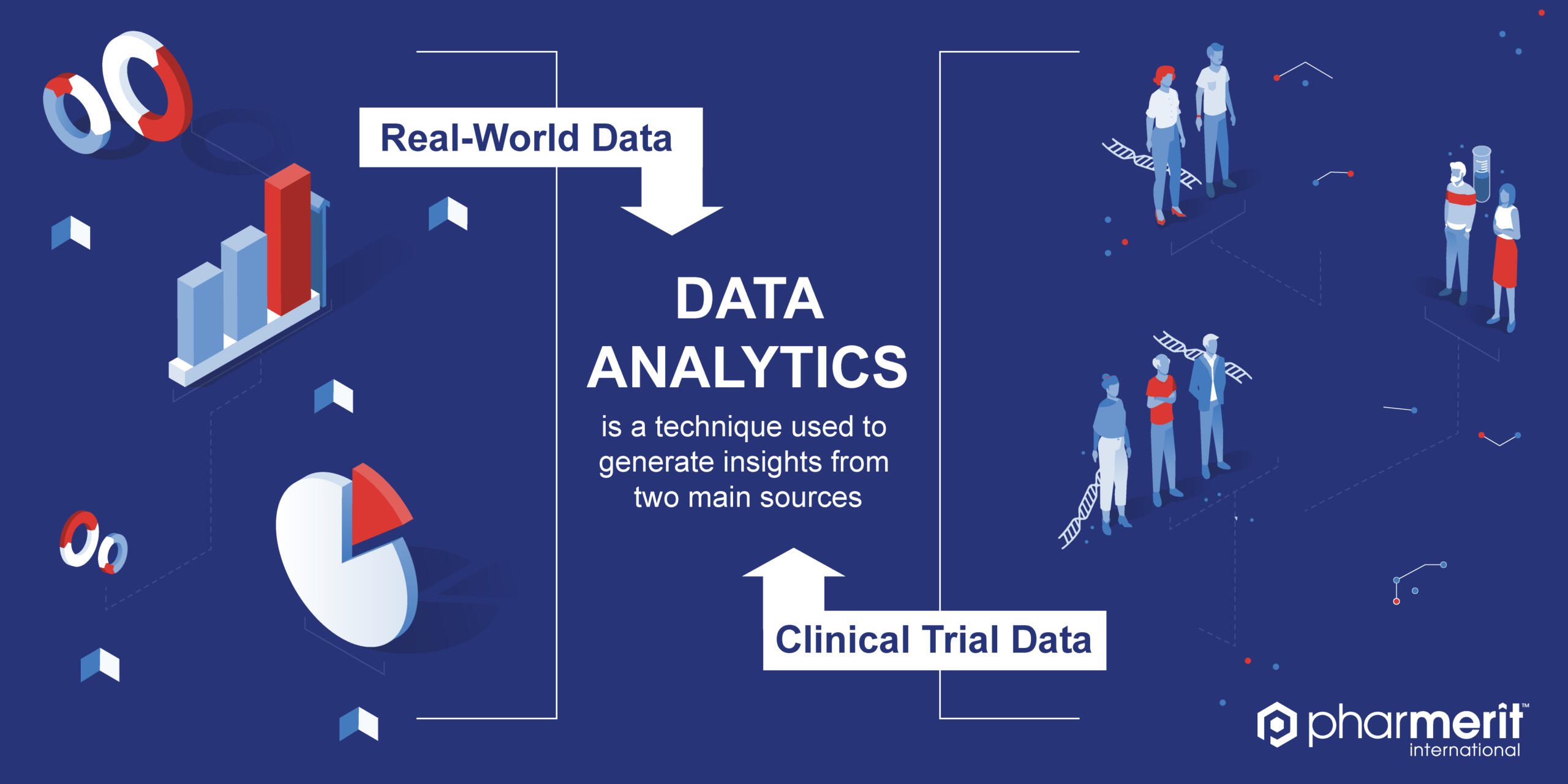Using Innovative Data Analytics for Market Access
November 4, 2019


Dr. Patti Peeples, CEO of HealthEconomics.com, sat down with Walter Bouwmeester, Real-World Evidence and Data Analytics Lead in Europe, to discuss the use of data analytics to support multidimensional health economics and outcomes research (HEOR) in Europe. Pharmerit’s mission is to improve patient access to medical care through evidence, worldwide. Pharmerit works with biopharmaceutical, biotechnology, and medical device organizations in HEOR worldwide.
Dr. Peeples: How do data analytics support health economics activities for market access?
Dr. Bouwmeester: This is a broad question, but I will give you some initial thoughts. Data analytics is a technique used to generate insights from two main sources, which include real-world data or data from clinical trials. The research question, end goal, and data characteristics determine the approach. You must identify the right data source and method to support the end goal.
A standard intention-to-treat (ITT) analysis of randomized clinical trial (RCT) data could show a limited effect on survival when patients switch to the new therapy after completing the control treatment (e.g., placebo). Various statistical approaches are available to adjust for this so-called treatment switching. Each has its strengths, assumptions, and limitations; choosing the right one considering the data at hand is crucial for generating the most accurate result. The NICE submission for sunitinib in gastrointestinal cancer (technology appraisal 179) showed that the common ITT approach underestimated the efficacy of sunitinib; the ITT estimated a hazard ratio of 0.88 while the rank preserved structural failure time model estimated a hazard ratio of 0.51. This obviously has a positive effect on the value demonstration of sunitinib and its cost-effectiveness estimates, among other areas.
Cost-effectiveness evaluations that are based on Markov models require the distribution of patients amongst health states (e.g., the proportion of patients pre- and post-disease progression). This is typically estimated using parametric formulas. New approaches have been published recently and health technology assessment (HTA) submissions require therefore justification of the selected methodology. Pharmerit has contributed to the development of new approaches and is a thought leader in the field of survival analyses for economic evaluations.
The analysis of patient-reported outcomes (PROs) or utilities often requires specific methods as well, because each patient has outcomes assessed at multiple time points. To appropriately model repeated measures and how they change over time, more advanced regression techniques should be applied. The use of standard regression techniques could result in severe underestimation of the uncertainty.
The selection of accurate statistical methodologies is essential for the value demonstration of pharmaceutical products and to convince HTAs in their reviews and assessments.
Dr. Peeples: What challenges do biopharmaceutical, biotechnology, and medical device organizations face in using data analytics services?
Dr. Bouwmeester: There might be various challenges, but I have recently encountered two trends in various HEOR studies.
I think the biggest challenge for the industry as well as its vendors is keeping abreast of the ever increasing amount of statistical and data analytics methods. The number of potentially relevant data analytics publications for HEOR applications is enormous and there is still a need to develop new data analytics methods resulting from new effect measures reported in trial publications. For example, there are multiple methods available to address missing values in repeated measures of PRO data. Researchers need to judge which method provides the most accurate estimates, considering the research questions and data at hand. This requires the involvement of experts and a skilled biostatistics team who can implement the increasing number of data analytic options in HEOR.
Another trend is to assess the similarity assumption for indirect treatment comparisons. With the increasing number of treatment options and the large amount of comparator trials in some disease areas, it is imperative that the right data analytical methods are used to efficiently explore similarity (heterogeneity) threats amongst trials. For instance, in gastric cancer and psoriasis, the number of treatment options investigated in randomized trials is probably over 40 therapies.
Biopharmaceutical, biotechnology, and medical device organizations should look for an integrated team of data analytics experts that has a background in econometrics, medical statistics, economics, or epidemiology and disseminates innovative techniques by actively participating in conferences and courses or publishing in key journals.
Dr. Peeples: How can data analytics support a product’s value story to create a well-thought out real-world evidence data generation and analysis plan for market access?
Dr. Bouwmeester: Data analytics transforms real-world data into real-world evidence. When I am working on a data analytics project, my goal is to turn the data into actionable insights that inform product value stories and resonate with key stakeholders – be it payers, clinicians, patients, or assessors. This allows you to create a real-world evidence generation strategy to support their product. In a recent blog by my counterpart in the US, Shelby Corman, she outlined the steps below. If you do steps one and two early in the process, we can collect and analyze the right and most impactful data to support the product’s value story. Here are the key elements of a real-world evidence generation plan:
- Start with the “aspirational” product value story and work backwards
- Establish the disease burden
- Identify current treatment patterns and unmet needs
- Determine the key economic drivers
- Support clinical effectiveness with an evolving value proposition
Learn more about each step here.
Dr. Peeples: How is Pharmerit developing innovative methods for evaluations of new treatments?
Dr. Bouwmeester: Working at Pharmerit allows me to work on different types of projects throughout a product lifecycle and investigate the needs for innovative methods with a multidisciplinary team.
We have recently developed new methods for survival extrapolations[i] and regression models for analyzing EQ-5D data.[ii] Survival data and utilities derived from EQ-5D surveys are important inputs for cost-effectiveness evaluations of new treatments in oncology. These variables drive the results of the evaluations for more accurate data analytic methods. Further, we are exploring and implementing machine learning methods to further understand their relevance for HEOR. A recent study has shown that machine-learning techniques could be useful in exploring patterns of care.[iii] For the purpose of predicting cure from hepatitis C treatment, we have constructed ensembles of individual machine learning models.[iv]
I am proud to be working with an innovative and experienced team of scientists with backgrounds in econometrics, medical statistics, economics, or epidemiology. Involving multiple disciplines in projects facilitate innovations which are essential for the value demonstration of pharmaceutical products and to convince HTAs in their reviews and assessments.

Walter Bouwmeester is an Associate Director in the Rotterdam office in the Netherlands. He leads the EU Real-World Evidence and Data Analytics Center of Excellence. His main experience is the design of and statistical methodology for studies involving database (registry) analyses, chart reviews, and trial analyses to populate health economic models. Walter holds a PhD degree in Epidemiology from the University of Utrecht.
Contact Pharmerit for more information on Real-World Evidence and Data Analytics.
[i] Diakite I, Klijn S, Navale L, Purdum AG, Fenwick E, Botteman M, van Hout B. MS2 An Updated Two-Year Survival Analysis of Axicabtagene Ciloleucel (AXI-CEL) in Relapsed or Refractory Large B-Cell Lymphoma (R/R-LBCL). Value Health. 2019 May;22(S2):S41. doi: 10.1016/j.jval.2019.04.050.
[ii] Feng Y, Devlin N, Shah K, Mulhern B, van Hout B. New methods for modelling EQ‐5D‐5L value sets: an application to English data. Health Econ. 2018 Jan;27(1):23-38. doi: 10.1002/hec.3560.
[iii] Ling Y, Chen Y, Chirikov V, Xie J, Qiu H, Otgonsuren Z, Dong P, Gao X. A Prediction Model for Length of Stay in the Icu Among Septic Patients: A Machine Learning Approach. Value in Health. 2018 May 1;21:S5.
[iv] Chirikov VV, Marx SE, Manthena SR, Strezewski JP, Saab S. Development of a comprehensive dataset of hepatitis C patients and examination of disease epidemiology in the United States, 2013–2016. Advances in therapy. 2018 Jul 1;35(7):1087-102.







